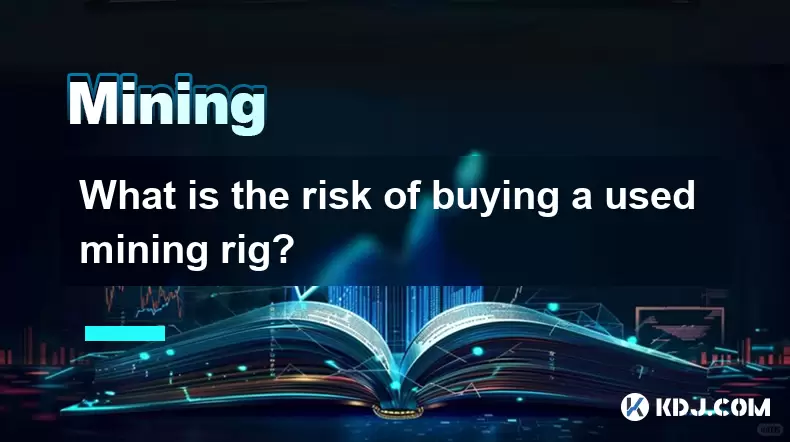-
 Bitcoin
Bitcoin $120400
1.77% -
 Ethereum
Ethereum $3615
7.90% -
 XRP
XRP $3.580
17.84% -
 Tether USDt
Tether USDt $1.001
0.06% -
 BNB
BNB $729.4
1.25% -
 Solana
Solana $179.9
5.04% -
 USDC
USDC $0.0000
0.01% -
 Dogecoin
Dogecoin $0.2311
8.22% -
 TRON
TRON $0.3226
4.04% -
 Cardano
Cardano $0.8490
12.85% -
 Hyperliquid
Hyperliquid $46.45
0.72% -
 Stellar
Stellar $0.4913
8.54% -
 Sui
Sui $4.027
2.00% -
 Chainlink
Chainlink $18.51
11.67% -
 Hedera
Hedera $0.2818
21.51% -
 Avalanche
Avalanche $24.03
7.40% -
 Bitcoin Cash
Bitcoin Cash $508.5
2.90% -
 Shiba Inu
Shiba Inu $0.00001496
3.24% -
 UNUS SED LEO
UNUS SED LEO $8.961
1.83% -
 Toncoin
Toncoin $3.264
3.13% -
 Litecoin
Litecoin $104.6
8.15% -
 Polkadot
Polkadot $4.389
6.11% -
 Uniswap
Uniswap $9.924
10.63% -
 Monero
Monero $337.9
0.49% -
 Pepe
Pepe $0.00001376
2.79% -
 Bitget Token
Bitget Token $4.830
2.46% -
 Ethena USDe
Ethena USDe $1.001
0.05% -
 Dai
Dai $1.000
0.02% -
 Aave
Aave $325.2
1.66% -
 Bittensor
Bittensor $423.7
-0.85%
What is the risk of buying a used mining rig?
Buying a used mining rig can be cost-effective, but risks like hardware degradation, lack of warranty, and hidden issues require careful evaluation before purchase.
Jul 17, 2025 at 06:28 am

Understanding the Concept of a Used Mining Rig
A used mining rig refers to computer hardware that has previously been utilized for cryptocurrency mining. These rigs typically consist of multiple graphics processing units (GPUs), high-capacity power supplies, motherboards, and cooling systems optimized for continuous operation. While purchasing a used mining rig may appear cost-effective, it comes with several inherent risks that potential buyers must evaluate before making a decision.
Used mining rigs often operate under intense workloads, which can significantly reduce their lifespan and performance compared to new hardware.
Potential Hardware Degradation and Lifespan Reduction
One of the most significant concerns when buying a used mining rig is the possibility of hardware degradation. Mining operations are highly demanding on components like GPUs and power supply units (PSUs). Continuous 24/7 usage at full load accelerates wear and tear.
- GPUs in mining rigs often run at 100% utilization for extended periods, leading to thermal stress and reduced longevity.
- Power supplies may be underrated or overworked, increasing the risk of failure or instability.
- Motherboards and memory modules may suffer from overheating, especially if the original cooling system was inadequate.
Buyers should inspect the hardware thoroughly or request detailed logs about usage hours, temperatures, and maintenance history.
Lack of Warranty and Support
Most manufacturers void warranties if hardware is used for cryptocurrency mining. As a result, many used mining rigs come without warranty coverage, leaving the buyer responsible for any repairs or replacements.
- Warranty policies often exclude mining-related damage, even if the hardware was purchased new.
- Technical support may refuse assistance once they discover the hardware was previously used for mining.
Without warranty protection, unexpected component failures can lead to costly repairs or complete system replacement.
Risk of Overclocking and Improper Configuration
Many miners overclock their GPUs to extract higher hash rates, which can cause long-term damage to the hardware. Buyers of used mining rigs may inherit systems that were overclocked beyond safe limits, potentially shortening the life of critical components.
- Overclocked GPUs tend to have higher operating temperatures, increasing thermal throttling and instability.
- Improper BIOS settings or undervolting configurations may not be documented, making optimization difficult for new users.
Before using a used mining rig, it’s essential to reset all settings to factory defaults and monitor performance under standard conditions.
Unreliable Seller Information and Hidden Costs
When purchasing a used mining rig online or through third-party platforms, there's always the risk of misleading information from sellers. Some may hide signs of excessive use, failed components, or incomplete setups.
- Incomplete rigs missing crucial parts such as riser cards, cooling fans, or mounting brackets may require additional purchases.
- False claims about hash rates or GPU performance can mislead buyers into paying inflated prices.
To mitigate this risk, buyers should ask for proof of working condition, including benchmark tests, real-time mining sessions, and photos of the actual setup.
Increased Power Consumption and Efficiency Loss
Mining rigs that have been heavily used may experience a drop in efficiency due to aging components. This results in higher electricity consumption relative to output, reducing overall profitability.
- Older GPUs may consume more power while delivering lower hash rates than expected.
- Degraded PSUs can lose efficiency over time, causing increased energy waste and heat generation.
Monitoring power draw using tools like Kill A Watt meters and comparing them against current market benchmarks is recommended before finalizing a purchase.
Frequently Asked Questions
Q: Can I check if a GPU was previously used for mining?
Yes, you can examine the physical condition of the GPU, look for signs of heavy dust accumulation, fan wear, and software-based diagnostics. Tools like GPU-Z can show usage metrics and clock speeds that may indicate mining activity.
Q: Are all used mining rigs unreliable?
Not necessarily. Some rigs are well-maintained and operated under optimal conditions. However, buyers must perform due diligence by requesting usage logs, testing hardware, and verifying component health.
Q: Should I buy a used mining rig for personal cryptocurrency mining?
It depends on your budget, technical knowledge, and willingness to take on potential risks. If you're prepared to replace parts and optimize the system yourself, a used rig can offer value. Otherwise, investing in newer equipment might be safer.
Q: How do I test a used mining rig before buying?
Ask the seller to run benchmarking software like FurMark or mining-specific tools like NiceHash or PhoenixMiner. Request videos of the rig running under load and review temperature readings and stability during operation.
Disclaimer:info@kdj.com
The information provided is not trading advice. kdj.com does not assume any responsibility for any investments made based on the information provided in this article. Cryptocurrencies are highly volatile and it is highly recommended that you invest with caution after thorough research!
If you believe that the content used on this website infringes your copyright, please contact us immediately (info@kdj.com) and we will delete it promptly.
- Bitcoin, Cloud Mining, Crypto Wealth: Riding the Bull Run in Style
- 2025-07-18 12:30:12
- Ethereum Gas Fees, ERA Airdrop: A New Yorker's Take on Crypto Chaos
- 2025-07-18 12:50:12
- Bitcoin, Altcoins, and the Crypto Market: Navigating Trump's Crypto Ventures and the Evolving Digital Landscape
- 2025-07-18 12:50:12
- Bitcoin Holdings and the Smarter Web: A Match Made in Digital Heaven?
- 2025-07-18 12:10:12
- Bitcoin, MSTR & Saylor's Strategy: A Winning Trifecta?
- 2025-07-18 08:30:13
- Bitcoin Mortgages Down Under: A New Wave in Australian Homeownership?
- 2025-07-18 08:50:12
Related knowledge

How are crypto mining profits taxed?
Jul 14,2025 at 12:28am
Understanding Cryptocurrency Mining and TaxationCryptocurrency mining involves validating transactions on a blockchain network and earning rewards in ...

How to keep a mining rig cool
Jul 12,2025 at 01:42pm
Understanding the Importance of Cooling in Mining RigsCryptocurrency mining is an intensive process that places heavy demand on hardware components, p...

How to mine crypto on a gaming PC
Jul 16,2025 at 12:00pm
What is Crypto Mining on a Gaming PC?Crypto mining involves using your computer's processing power to validate transactions on a blockchain network. A...

How to set up a crypto miner
Jul 16,2025 at 09:14am
Understanding Ethereum Gas Fees: What Are They and How Do They Work?Ethereum gas fees are a fundamental aspect of the network, representing the cost r...

Can you mine crypto on a laptop?
Jul 16,2025 at 02:21am
Is It Feasible to Mine Cryptocurrency on a Laptop?Mining cryptocurrency on a laptop is technically possible, but feasibility depends heavily on the ha...

Is crypto mining worth it?
Jul 16,2025 at 01:21am
Understanding the Basics of Crypto MiningCrypto mining refers to the process of validating transactions on a blockchain network by solving complex mat...

How are crypto mining profits taxed?
Jul 14,2025 at 12:28am
Understanding Cryptocurrency Mining and TaxationCryptocurrency mining involves validating transactions on a blockchain network and earning rewards in ...

How to keep a mining rig cool
Jul 12,2025 at 01:42pm
Understanding the Importance of Cooling in Mining RigsCryptocurrency mining is an intensive process that places heavy demand on hardware components, p...

How to mine crypto on a gaming PC
Jul 16,2025 at 12:00pm
What is Crypto Mining on a Gaming PC?Crypto mining involves using your computer's processing power to validate transactions on a blockchain network. A...

How to set up a crypto miner
Jul 16,2025 at 09:14am
Understanding Ethereum Gas Fees: What Are They and How Do They Work?Ethereum gas fees are a fundamental aspect of the network, representing the cost r...

Can you mine crypto on a laptop?
Jul 16,2025 at 02:21am
Is It Feasible to Mine Cryptocurrency on a Laptop?Mining cryptocurrency on a laptop is technically possible, but feasibility depends heavily on the ha...

Is crypto mining worth it?
Jul 16,2025 at 01:21am
Understanding the Basics of Crypto MiningCrypto mining refers to the process of validating transactions on a blockchain network by solving complex mat...
See all articles

























































































